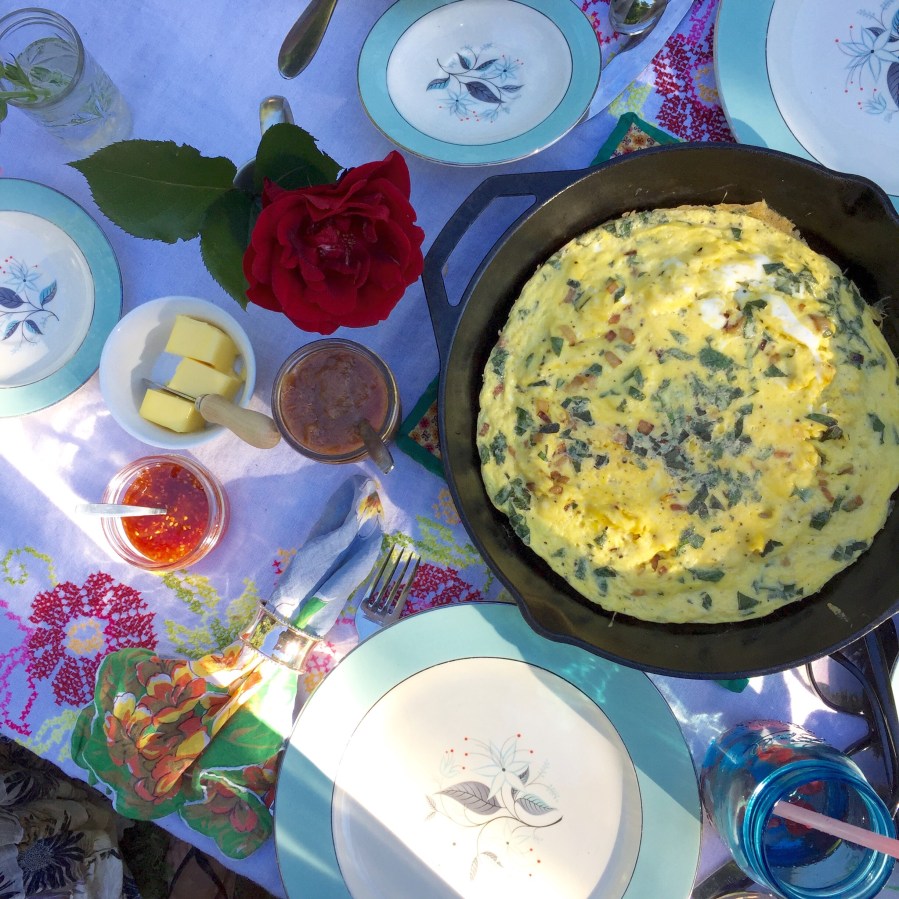Savoring the ordinary
I go into the dressing room with blousey shirts and leggings, chosen for how they highlight my assets and disguise my liabilities. But this one makes my chest look too big, this one’s sleeves are cut at the widest section of my arm, and this one shows the bulges at my waistline. I hand them all back to the attendant and resolve to start planning my next cleanse. And maybe go buy a new pair of Spanx.
This way of thinking–of hiding what I hate about myself and never being satisfied with my body–is just exhausting. Especially as a person who loves to cook and eat and enjoy all that’s beautiful about the world, including butter. How do I live with balance, embracing the good in food but still choosing well for my health and body? I tend to vacillate between either eating for momentary pleasure or adopting lots of rules around food to try to feel better in my skin. The deprivation /indulgence ride speeds up as I switch between them faster and faster until I’ve fallen down dizzy.
I was invited to share some reflections on food with my faith community and it got me thinking about how eating transcends these categories I’m constantly juggling. Food is not just nourishment. It’s not just pleasure either. Beyond the utility and emotion of food, there is something else happening within us when we sit down to a Thanksgiving meal, or stand vigil over a pot of some beloved family recipe, or go back to the restaurant where a young love first blossomed. There is something deeper in these exchanges than calories or comfort. Food has the ability to lift us into the regions of the soul. Why else do Muslims fast and Jews prepare the Passover meal and Christians take communion? These traditions exist because in the very place of our most basic human needs, there is the potential for profound spiritual experience.
As I prepared, I stumbled across an idea that intrigued me: the rhythm of the old church calendar with its feast days and fasts and all the every-day eating in between. The brilliant writer of the culinary classic The Supper of the Lamb, Robert Farrar Capon, explores these categories of festal, fasting, and ferial (every-day) eating. He says that festal eating should be all-out, joy-filled indulgence while ferial cuisine is no less delectable, but grounded in frugality and simplicity. Fasting should be entered whole-heartedly when necessary and, once completed, set aside so we can return to the pleasure of eating. Through this we express the scope of our humanity: festal rejoicing, daily faithfulness, and the humility of fasting.
The body isn’t the focus. Here is a way of eating that speaks to the rhythms of life itself, to the movements of the heart, to the unfolding complexities of our relationships, accomplishments, defeats, and longings. What appealed to me most is this idea of every-day ferial eating. Here I give myself whiplash between feasting and fasting, but Capon points out that the bulk of our days are in-between and “life’s grand ordinariness must never go unsavored.” Ferial eating is about simplicity and wholesomeness. Eating food that is good for my body, good for the land, and prepared well. It’s not baked brie and champagne, but think what culinary delights might be coaxed from eggs, herbs, or an onion. It shouldn’t be expensive—to my wallet or my liver, and the lack of festal delights should build longing the way the build-up of December prepares children for the joys of Christmas morning.
Ferial eating isn’t dieting, though. So many “diet” foods offer an artificial richness without whatever ingredients are deemed offensive. We’re trying to maintain a perpetual state of fasting while still experiencing a feast. We want to “eat our cake without having it,” as Capon says, which seems like we’re just not being honest with ourselves. Dieting isn’t a part of this equation. Fasting is. Such a common old-world practice is a bit lost on most of us today. There are many ways to fast, but the basic idea is that there are times to put food aside to attune ourselves to spiritual matters, to express grief, to have solidarity with the hungry, or to address our own excess.
Since reading Capon on the subject of festal, ferial, and fasting, I’ve begun to wonder…what if I ate this way? What if when I feast, I eat with abandon for the sake of shared joy with others? No diet birthday cakes or whipped cauliflower instead of mashed potatoes at Christmas. What if I fasted not to serve my own self-image but with solemnity for the connection between my soul and body? With my journal and self-reflection instead of scales and self-loathing. And what if I ate daily in a way that builds anticipation so that I can enter those festal moments unbridled and fasting seasons ready for self-discipline.
This mentality doesn’t give a lot of room for my insecurities about my body to make the decisions. And here’s what I really wonder:
What if I simply accept my body for how it is when I am rightly related to food, rather than trying to relate to food in a way that lets me accept my body?
What if there is a joy that goes much deeper than self-confidence? Perhaps it’s found in laying down all the striving to make myself presentable and instead being fully present to the unforced rhythms of this life.
J.M. Roddy is a domestic creative, food enthusiast, and children’s author.


Beautiful and helpful to my spirit! This speaks so close to myself as I know it does so many others. Thank you for sharing your vulnerable heart and mind in this matter. We need this!
LikeLiked by 1 person